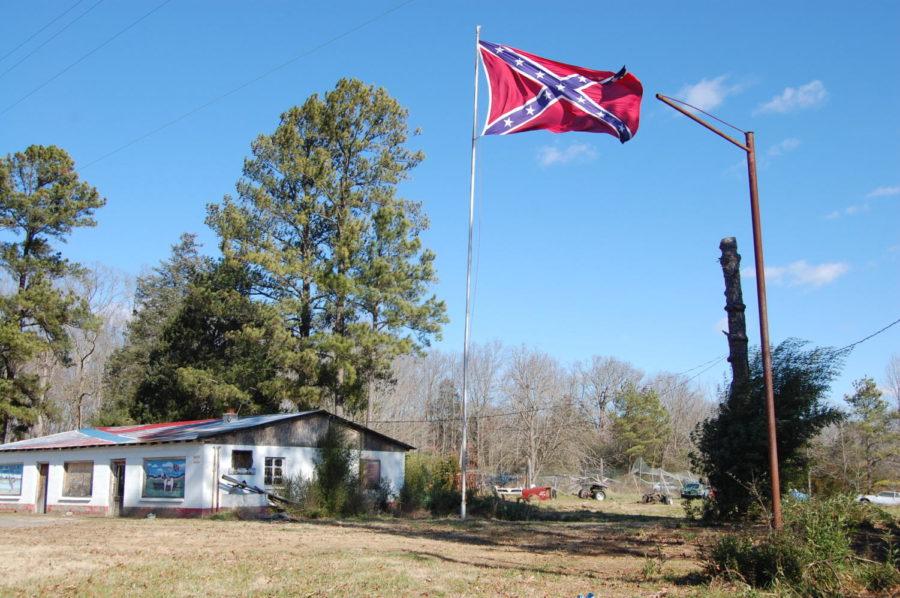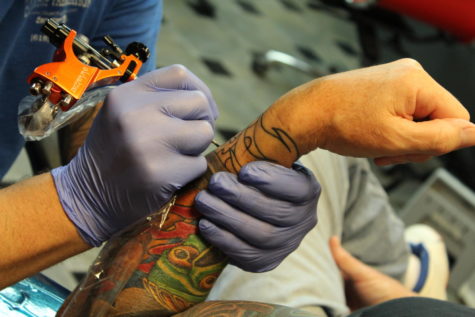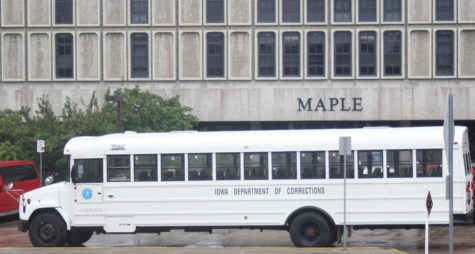Glawe: U.S. must remove symbols of tyranny, slavery
Photo courtesy of Donald Lee Pardue/Wikimedia Commons
The U.S. cannot begin to resolve the issue of racism until the symbols of tyranny and slavery are removed.
June 23, 2015
In January of the 2008 presidential race, Republican primary candidate Mike Huckabee had this to say about the Confederate flag flying over the State House building: “You don’t like people from outside the state coming in and telling you what to do with your flag. In fact, if somebody came to Arkansas and told us what to do with our flag, we’d tell ’em what to do with the pole; that’s what we’d do.”
This is the sort of political pandering that would force resignation from any race, but no outcry meant no resignation. Mike Huckabee continued to run despite this blatantly offensive comment. It’s not offensive for the rather ineloquent “tell ’em what to do with the pole.” That’s typical “pretend to be colloquial” talk. For many, especially African Americans, the Confederate battle flag flying over the State House symbolizes the very manacles of slavery. Huckabee defended that symbol free of repercussion.
I am pleased to see many Republican politicians now repudiate the battle flag. Why then, has the flag continued its presence? Why did it take a shooting for us to realize just how offensive its presence is?
The battle flag, along with the prior shooting of nine people in a historic African American church, is overtly racist, but the media, as it did with Mike Huckabee, repeatedly fails to call this what it is — either by pure careless reporting, or more accurately frivolousness. It was only after a great outcry that politicians were pressured into taking down the battle flag. Does this not say something about ourselves when we still cling to that symbol of the worst part of our history? What more does it say of our politicians?
Jon Stewart’s monologue on the shooting highlighted the lazy effort of reporters to put forth the correct rhetoric. One reporter, Stewart says, stated that the shooting was a great “tragedy.” Stewart responded by stating, “This wasn’t a tornado, this was a racist.” That is the correct formulation of the occurrence, and it happened before shooter Dylann Roof confessed to police that he wanted to start a race war.
But even after acknowledging the overt racism, at least in Stewart’s eyes, “we still won’t do jack s—.” This, I think, is the crux of the monologue. Too often we think racism in our country has been resolved and that we can just move on. It’s simply not true, but it shouldn’t take a shooting, or a couple shootings, for us to realize that is the case.
Sometimes it seems as if we will never purge this pestilence of racism from our country. Political pandering certainly keeps it alive and well. Despite all of the progress we have made, from the Civil War to the Civil Rights Movement, racism continues to exist in its various forms.
Hate groups continue to thrive and warp the minds of youths such as Dylann Roof. Indirect racism, such as the anxiety one might have when walking down the street late at night in an African American neighborhood, continues to subtlety taint our being. It is a heritage of hate, bigotry and anxiety that our nation lacks the resolve to confront.
The Confederate battle flag over the State House of South Carolina is not a symbol of “state’s rights” (states don’t have “rights” they have “powers”, just as the federal government doesn’t have “rights”). The flag, if anything, represents South Carolina’s fight to keep its slaves. The same is true for anybody who hoists the flag up in the dorm or flies it outside their home.
The flag is only the first problem. Many of the streets in South Carolina are named after Confederate generals who fought, in most cases, to keep their own slaves. In the United States Capitol there reside the state statues, some of which are dedicated to well-known Confederate leaders. When I gave tours of the U.S. Capitol building, I saw with my own eyes how cringing and ingratiating this sight was for many African Americans.
It is not until we tear down the symbols of tyranny and slavery that we can begin to resolve the issue of racism. Perhaps then we may call forth the better angels of our nature.
















